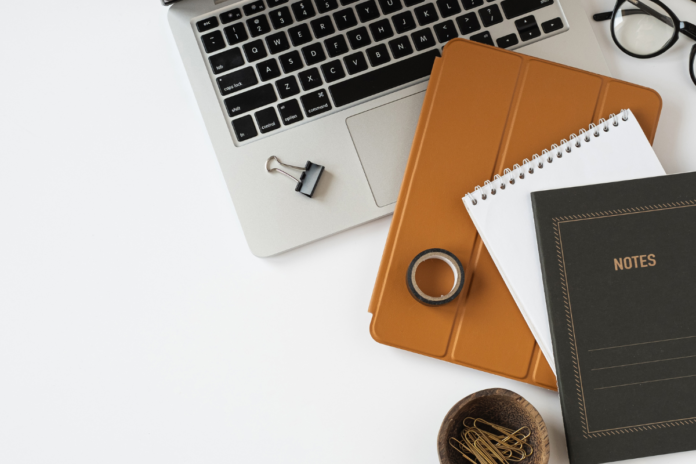It’s back-to-school season, and you’re looking for the best school supplies, including the most helpful tech, to give your child the best chance of success in the upcoming academic year. But, of course, this raises the critical question: Which is better for a student taking online courses: a tablet or a laptop?
Difference between a Laptop and a Tablet:
Whether students are learning in the classroom or remotely, laptops and tablets are now necessary tools. The main variations between a tablet and a laptop are
Size: The device’s size will be determined partly by its primary use.
Cost: Create a budget at the outset. Many laptop and tablet options are available for different price ranges.
Functionality: Consider how you intend to use the tablet or laptop. Do you require a connected keyboard? Will you use this device for presentation preparation? Choosing the best option will be easier if you have these answers before starting.
Both laptops and tablets can be used for educational purposes. They share many features in common, such as simple access to online textbooks and articles and the ability to communicate with classmates and teachers via email or an online learning platform like Google ClassroomTM or Schoology®.
Best for Classroom Use:
The Best for classroom use is a Tablet. A couple of years ago, purchasing a laptop in this situation would have been strongly recommended. However, thanks to tablet feature improvements and keyboard accessories availability, you are now better at taking notes.
This is why a tablet has one clear advantage over the reliable old laptop from the past in the classroom. A rear camera is standard on tablets but not laptops, which is a significant difference. For example, suppose you’re tired of taking notes quickly while seated in the front row of your class, close to the blackboard. In that case, you can quickly open the tablet’s camera app, hold it up, and take a picture of the chalkboard, preserving a visual record of any impromptu notes your professor has made (which may not make it into the class notes they hand out later). There is no chance that you can accomplish that using a laptop. You can read more about such college tablets on Tabletgeeky.com
Finding a keyboard that just plain works with your tablet is now effortless, thanks to peripheral manufacturers upping their game in highly customized offerings for Android or iOS tablets.
You can find thin keyboards with OS-specific key layouts for tablets, whether iPads or Androids. For instance, instead of the typical Control, Alt, and Shift keys found on a QWERTY keyboard for PC use, Android-ready keyboards meant to be used with tablets have Back, Home, Multitasking, etc. keys to help you feel comfortable while using the OS. In conclusion, using a tablet and a customized physical keyboard is nearly identical to using a laptop.
Best for Uncompromised Use:
The tablet outperforms the laptop when used in a classroom, but there’s no denying that the computer beats the pill every day of the week when it comes to pure performance. You need a laptop at school for high-performance tasks like HD video editing, graphics editing with print-quality artwork, rendering 3D models, and good old PC gaming because a tablet just won’t cut it.
Yes, a tablet will typically have a longer battery life than a Windows laptop (MacBooks are another story entirely), but being forced to use a mobile computing device that lasts longer with no productivity isn’t very enjoyable. However, suppose you play your cards right and purchase a laptop with the most recent generation of Intel chips, particularly those with a “U” in their model number and clock speeds under 2-GHz. In that case, you may be able to obtain a Windows laptop with a battery life of 6 to 8 hours, which is undoubtedly comparable to that of a tablet.
Regarding its connectivity features, the laptop doesn’t feel as constrained as a tablet in this regard. It is much simpler to connect different devices to a traditional laptop than a tablet because they have more physical connectivity ports, such as USB ports, HDMI or DisplayPort, universal docks, etc. For instance, all you have to do to attach an external hard drive to your laptop is plug it in. It would be not easy to accomplish this on a tablet without a USB port quickly and easily.
Most Unportable one:
Come on, and you already know the winner of this category. Laptops are still thicker and heavier than the svelte and slim tablets, despite their size reduction over the years. However, in the more popular 7-inch and 10-inch form factors, tablets are supreme in providing unmatched ultra portability compared to laptops. Some 10-inch laptops, or netbooks, can weigh as much as some of the larger, thicker 12 or 13-inch slates or tablets—glance at a tablet. You can read books or watch videos on most of them while holding them in one hand.
A place is required for storing laptops. A tablet is simple to tuck into a backpack and fits into big handbags or purses. Most reasonably powerful laptops need their bag to transport them. Most of you would carry the thinner, lighter tablet if you had to choose between taking a computer or a notepad on your daily commute to school, with usability and performance put to the side. Bottom line? Most tablets easily weigh less than 1 kg, whereas it’s difficult to find a laptop that’s under that limit, and when you do, you discover that it costs as much as two or three tablets!
Touchscreen Vs. Widescreen:
It’s a little challenging to say which is better because both tablets and laptops can have both features. Although not all laptop screens are touchscreen-enabled, all tablets support multi-touch input by default. Additionally, touchscreen laptops are significantly more expensive than their non-touchscreen counterparts. Therefore, a tablet is the best choice if you want the touchscreen’s convenience without breaking the bank.
A word of caution should be used when using touch screens, though. While they’re great for consuming media and information, typing on them or making frequent inputs can be a pain. Of course, you can always choose a keyboard accessory, but if you order a lot (like we do), you won’t really like those keyboards, and you can’t even consider getting by with a touchscreen!
When it comes to widescreens, we’re not just talking about the resolution—we’re also referring to the screen’s actual physical width. In contrast to tablet displays, which typically have a resolution of 1200 x 600 pixels, laptop screens almost universally have a resolution of 1366 x 768 pixels by default. Of course, if you spend more, you can get Full HD screens for both laptops and tablets, but given their smaller physical size, tablets are almost always more affordable between the two. We can’t speak for you, but a tablet is the best option for reading on a screen for extended periods. However, the larger space offered by a laptop form factor is unbeatable. A laptop might be a better choice because they have physically larger screens if you need to collaborate and sit with others while looking at screens. But you’ll have to decide based on your particular needs because this is a toss-up.
Best Resale Value:
Except for Nexus tablets, most Android tablets don’t have a great resale value compared to iPads. After a year of use, even high-end tablets from well-known brands perform slower and sluggishly, costing less than premium returns on sites like eBay, OLX, and Quikr. So why do Nexus tablets perform marginally better than the average tablet in the resale market? Simply because they have a long operating system lifespan and support the most recent Android updates. However, tablets are a product category with rapidly declining returns.
That issue doesn’t affect laptops as much. In terms of a percentage value, a computer will provide better returns than a tablet if you decide to sell it after just a year of use, assuming both devices experience roughly equal wear and tear. Why the contrast? Every year, there are fewer and fewer differences between the minor hardware platform updates seen on the laptop side, and the line showing changes at the OS level is also essentially flat. Additionally, you can install Windows 10 on a laptop that is five years old without voiding the warranty, having to jump through hoops, or having to worry about “bricking” your computer. The one-year-old tablet you’re about to list on eBay lacks all of these extras, which will significantly lower its ability to be sold. Additionally, because tablets are sold at prices that are considerably lower than those of laptops, people are less likely to buy newer models of these devices without giving it any thought than they are with laptops.
Which One to Choose?
Tablets and laptops each have advantages and disadvantages. Tablets have the advantage of being incredibly handy and straightforward to use. You’re better off purchasing a tablet if you plan to work on your web browser and Google Docs, listen to YouTube videos, and stream movies and music online – without having to take numerous printouts from your printer and other materials for your project, etc. There is no denying its extremely ultraportable form factor, which makes it much easier to use with one hand than a laptop on any given day. Compared to a traditional laptop, it is unquestionably more versatile because it can also function as an ebook reader.
You must also take into account any unique needs you may have. For example, you must select a laptop if your college has a physical LAN and no Wi-Fi. Again, a computer is recommended if you need to format documents and print a lot of stuff. It would help if you had a laptop to do video editing, image editing, or, yes, even play games.
Conclusion
But there’s no denying that a laptop is the most versatile option because it is, in this comparison, the most similar to a PC. A laptop will always be superior to a tablet when running specific software, needing a larger HDD to store items, or needing to complete work quickly. If all you have is a tablet, you’re taking too long for a laptop to work on college projects and conduct research while having 50 browser tabs open. Regarding productivity, Android or iOS cannot match full-fledged Windows.










